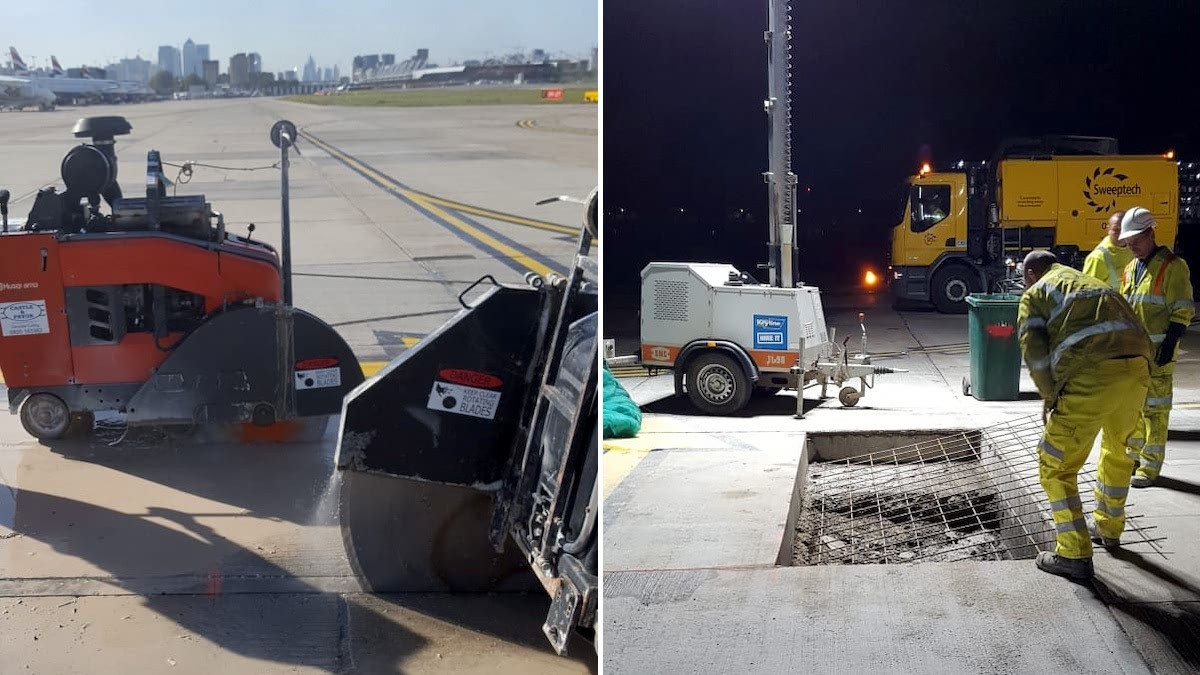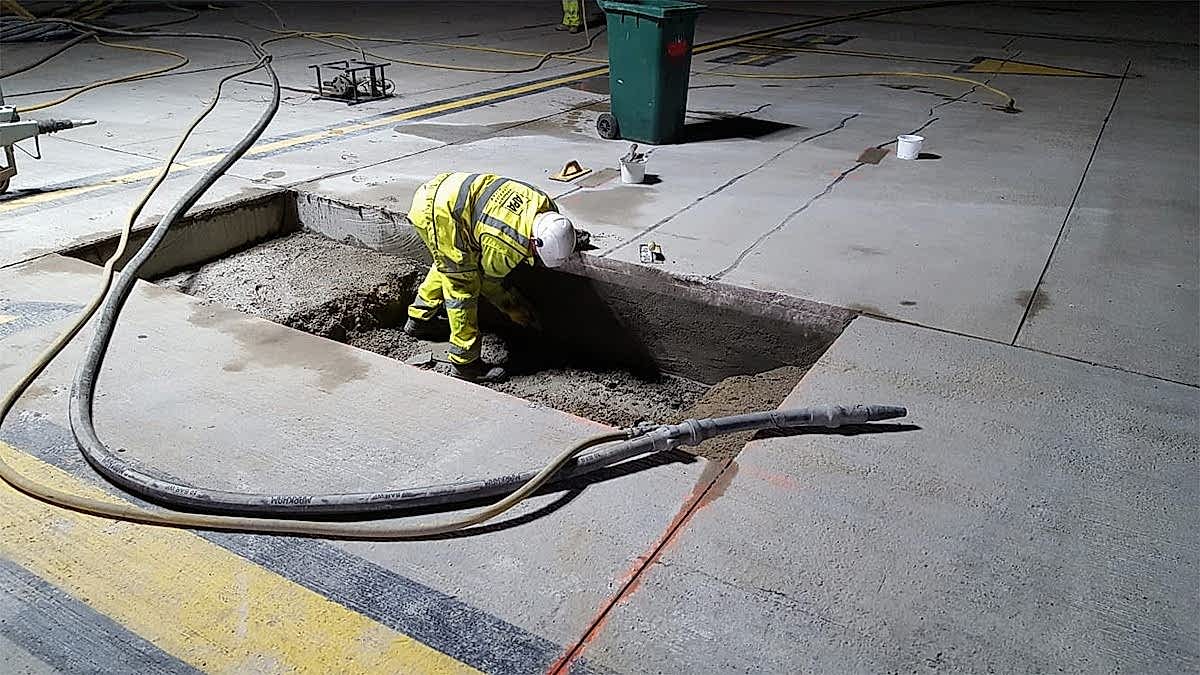 0800 163 382 Call us Monday-Friday: 8.00am - 5.30pm Menu
0800 163 382 Call us Monday-Friday: 8.00am - 5.30pm Menu The runway must be surveyed to make sure it’s structurally sound and that there are no issues in the chambers below.
That’s why LCA called on the Castle & Pryor team to survey the concrete that supports the apron above the pump chamber. We carried out a controlled excavation to check the condition of the support beams and used an endoscope to look inside the pump chamber.
The purpose of our survey was to check the size of the prestressed beams, their spacing and their condition. And to look inside the pump chamber to check if it was filled with air, water, or infilled with another material.
What were our biggest challenges on the job at London City Airport?
1. Working in a live airport environment is always a challenge. But here at C&P, it’s what we do best! As with any UK airport maintenance service, we were working against the clock. The runway was closed from 1pm and scheduled to reopen at 10.30am the next day. We carried out thorough visibility studies beforehand to keep things on schedule.
2. Working in a confined space. We had to make our concrete cuts with exacting precision to prevent any over cut into the adjacent bay.
3. We couldn’t take any risks with the pre-stressed beams. So we used low-vibration equipment on the job to protect them from damage.
What equipment did we use?
Stage 1 – Concrete breakout & removal
First of all, we removed the PQC bay and dry lean concrete below to check the condition of the prestressed beams and the bearing plate. But this wasn’t an ordinary concrete cut. Due to the sensitive nature of the work, we had to be extra careful that the cut didn’t overrun into the next bay. So we started by stitch drilling the end of each cut carefully with the trailer rig before completing the cut with the concrete floor saw.


Stage 2 – Hydrodemolition
Next, we used hydro-demolition to expose small pockets and check the reinforcements within the concrete. This stage is the most high risk and is carried out by our highly skilled engineer. We set up secure fencing around the area to contain debris dislodged by the high water pressure. You can see here (see image) that the steel reinforcements inside the concrete are still in excellent condition.
Stage 3 – Endoscope inspection
Once we’d removed the concrete slab to expose the beams, we drilled a small pilot hole into the exposed face to access the pump chamber. This allowed the engineer to photograph the chamber with an endoscope and find out what was below in the chamber.
Stage 4 – Reinstating
We reinstated the small pockets with fast setting concrete and sprayed the exposed pump chamber cover with Fosroc Rendorec DSR.
Stage 5 – Backfilling with PQX concrete
After the investigations were complete, we reinstated the bay using PQX, sealed the beam end with Flexcell joins and tested the strength of the PQX concrete with a concrete cube crush test.
With our investigations complete, the apron at London City Airport was given the all-clear and was back up and running in time for the morning flights.
Looking for an approved airfield contractor in London? Get in touch with us today for your free quote.